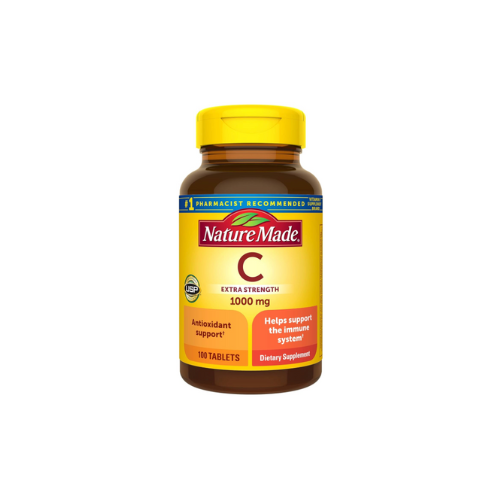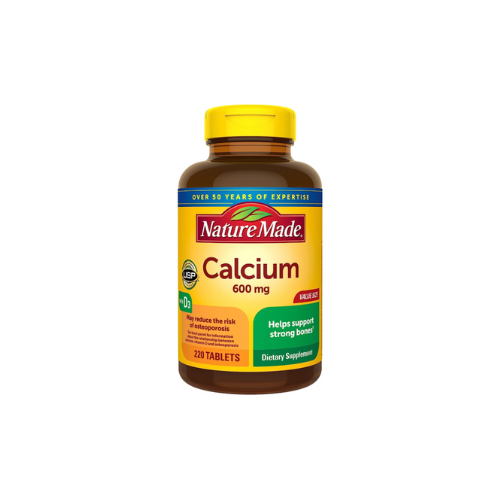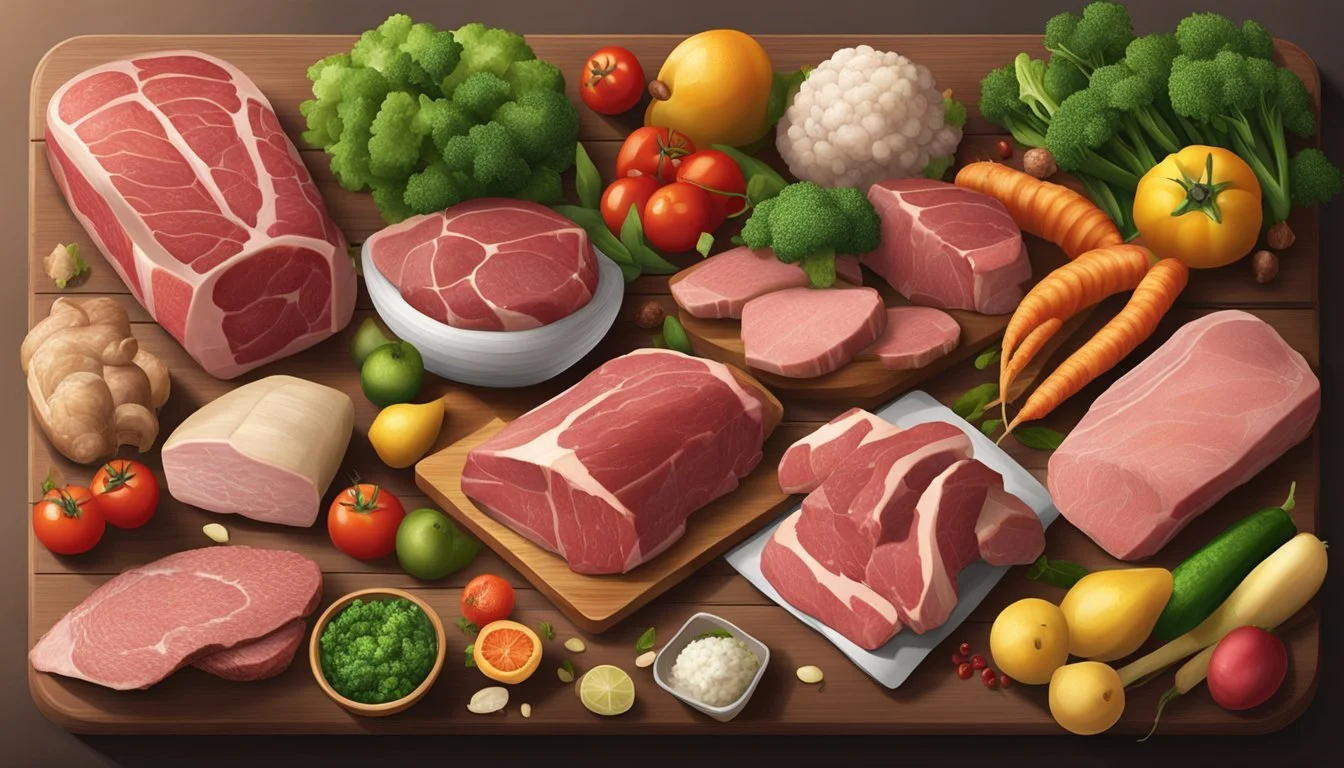The Carnivore Diet for People with Anemia
A Guide to Iron-Packed Meats
Anemia, characterized by a deficiency in the number or quality of red blood cells, gravely affects the transport of oxygen throughout the body. This condition is often linked to inadequate iron levels, an essential mineral for the production of hemoglobin, the oxygen-carrying component of red blood cells. The carnivore diet, with its emphasis on consumption of exclusively animal products, presents a nutrient profile that's naturally high in heme iron, a type of iron that the human body absorbs more readily compared to non-heme iron found in plant-based sources.
For individuals with anemia, the carnivore diet has been suggested as a dietary intervention capable of providing substantial amounts of bioavailable iron. This diet focuses on iron-rich foods such as red meat (What wine goes well with red meat?), poultry, and fish, which are prime sources of both heme iron and vitamin B12, another nutrient crucial for preventing and addressing anemia. Due to their high heme iron content, these animal-based foods can contribute to the replenishment of iron stores more efficiently than their plant-based counterparts.
The approach of using the carnivore diet to combat anemia hinges on the premise that the bioavailability and density of nutrients in animal products can effectively rectify nutritional deficiencies. It is imperative for individuals considering this diet for anemia treatment to understand the nutritional profile of different meats, as choices like organ meats are particularly dense in iron and other micronutrients beneficial for managing anemia. However, it is equally important to assess the suitability of this diet on an individual basis and to consult healthcare professionals when seeking to address iron-deficiency anemia through dietary changes.
Understanding Anemia and Its Connection with Diet
Anemia is a condition characterized by a deficiency of red blood cells or hemoglobin, often due to inadequate dietary iron. The diet's role in preventing and managing anemia is pivotal, focusing on iron intake that influences red blood cell production.
Types of Anemia Related to Iron Deficiency
Iron-deficiency anemia is the most common type of anemia. It occurs when the body lacks sufficient iron to produce hemoglobin, the protein in red blood cells responsible for carrying oxygen. Without adequate hemoglobin, the body can't effectively oxygenate tissues.
Microcytic anemia is another subtype characterized by smaller-than-normal red blood cells, mainly due to insufficient iron. It is crucial to identify the correct type since each requires a tailored approach to diet and treatment.
Role of Iron in the Body and Red Blood Cells Production
Iron plays a critical role in the body. It is a component of hemoglobin and is essential for the production of red blood cells, which transport oxygen throughout the body. Iron is also crucial for energy metabolism and proper immune function.
Deficiency in iron can lead to reduced production of red blood cells or hemoglobin, resulting in symptoms such as fatigue and weakness.
Heme vs Non-Heme Iron
Dietary iron comes in two forms: heme and non-heme iron.
Heme iron: This type of iron is found in animal foods, such as red meat, poultry, and fish. It is more easily absorbed by the body and thus considered more effective in alleviating symptoms of iron-deficiency anemia.
Non-heme iron: This iron is found in plant-based foods, like legumes and leafy greens, and is not absorbed by the body as efficiently as heme iron.
Incorporating heme iron sources into the diet is often recommended for individuals with anemia or those at risk of iron deficiency.
Benefits of the Carnivore Diet for Anemia
The carnivore diet is particularly noteworthy for individuals with anemia, as it focuses on meat-based food sources which are naturally rich in heme iron. This type of diet may facilitate improved iron absorption, a crucial factor for those dealing with anemia.
Iron Absorption from Meat-Based Sources
Heme iron, predominantly found in animal products, is more readily absorbed by the body in comparison to non-heme iron from plant-based sources. The carnivore diet exclusively consists of animal proteins, thus providing a direct and potent source of heme iron. Consistently incorporating these sources in one's diet can lead to more efficient iron uptake, which is essential in managing and potentially resolving symptoms of anemia.
High Absorption: Up to 30% of heme iron is absorbed by the body.
Low Absorption: Only 2-10% of non-heme iron from plants is absorbed.
Comparing Iron Availability in Different Meats
Not all meats are created equal when it comes to iron content. It is beneficial to recognize which meats rank higher in iron to prioritize them in a carnivore diet for anemia management.
Red Meat: Beef and lamb are at the top, with beef liver being particularly high in iron.
Poultry: Dark poultry meat contains more iron than white meat.
Fish: Certain types such as shellfish and sardines are good sources of iron.
Iron Content in Various Meats (Per 100g)
Beef Liver
Iron Content: 6.5 mg
Ground Beef
Iron Content: 2.7 mg
Dark Chicken
Iron Content: 1.3 mg
Light Chicken
Iron Content: 0.9 mg
Canned Sardines
Iron Content: 2.9 mg
The carnivore diet emphasizes these nutrient-dense meats, offering an effective way to bolster iron levels for those suffering from anemia.
Best Meat Choices for Iron Supply
For individuals with anemia, consuming iron-rich meats is crucial for replenishing iron stores in the body. Animal-based foods offer heme iron, which is absorbed more efficiently than the non-heme iron found in plant sources.
Beef and Organ Meats
Beef is particularly high in heme iron, making it an excellent choice for those looking to boost their iron intake. Organ meats, especially liver, are even richer in iron and nutrients essential for combating iron-deficiency anemia. Including items such as:
Liver: A powerhouse of iron and vitamin B12.
Red Meat: Options like ribeye and porterhouse provide substantial iron reserves.
Poultry and Lamb
Poultry serves as a good source of heme iron and is typically lower in fat, offering a leaner option without compromising on iron availability. Lamb, on the other hand, pairs iron richness with significant flavor. They offer:
Chicken Thighs: (What wine goes well with chicken thighs?) Darker meat poultry with higher iron content than white meat.
Lamb Chops (What wine goes well with lamb chops?): A flavorful red meat alternative with ample iron content.
Fish and Seafood Selections
Fish and seafood selections contribute not only iron but also omega-3 fatty acids, which are beneficial for heart health. Choices in this category include:
Salmon: This fish is not only rich in iron but also in important omega-3s.
Seafood: Varieties like oysters and clams (how long do clams last?)are loaded with iron and serve as excellent seafood options for boosting iron levels.
Incorporating Iron-Rich Meats into Your Diet
When individuals with anemia adopt a carnivore diet, they prioritize iron absorption by selecting high-quality meats known for their iron content. This allows for an effective approach to increase iron levels through diet.
Creating a Balanced Carnivore Meal Plan
A balanced carnivore meal plan for anemia should focus on a variety of meats that offer high levels of heme iron, which is better absorbed than non-heme iron found in plant sources. Red meat, such as beef and lamb, is typically at the top of the list for iron-rich choices. Poultry, particularly dark meat like chicken thighs or turkey legs, provides a significant iron contribution too. With fish, choices like sardines, tuna, and salmon not only boost iron intake but also provide essential omega-3 fatty acids.
A sample meal plan might include:
Breakfast: Scrambled eggs with diced ham
Lunch: Grilled chicken thighs with liver pâté
Dinner: Seared steak or lamb chops
These options ensure a varied intake of meat-based iron sources throughout the day.
Portion Sizes and Frequency of Consumption
Understanding the portion sizes and frequency of consumption is key to maximizing iron intake while following a carnivore diet. Although it's important to meet daily iron needs, excessive intake can pose health risks.
Meat Consumption Guidelines: Portion Size and Suggested Frequency
Beef (steak)
Portion Size: 3-4 ounces
Suggested Frequency: 3-4 times per week
Lamb
Portion Size: 3-4 ounces
Suggested Frequency: 2-3 times per week
Chicken thighs
Portion Size: 3-4 pieces
Suggested Frequency: 3-4 times per week
Fish (tuna, salmon)
Portion Size: 4-6 ounces
Suggested Frequency: 2-3 times per week
Individuals should adjust portion sizes and frequency according to their specific dietary needs and iron levels as determined by a healthcare professional.
Enhancing Iron Absorption
Proper iron absorption is essential for individuals with anemia on a carnivore diet. It ensures the efficient use of the heme iron found in animal products.
The Role of Vitamin C and Other Nutrients
Vitamin C significantly enhances the absorption of iron. Consuming foods rich in vitamin C alongside iron-rich meats can improve the uptake of iron by the body. For instance, adding a squeeze of lemon juice to a steak increases the availability of iron for absorption. Other beneficial nutrients include vitamin A and beta-carotene, which also promote iron absorption from the diet.
Important Nutrients that Enhance Iron Absorption:
Vitamin C: Found in citrus fruits and juices, bell peppers, and dark leafy greens.
Vitamin A: Available in liver, fish oils, sweet potatoes, and carrots.
Beta-carotene: Present in carrots, sweet potatoes, spinach, and kale.
Foods and Substances That Inhibit Iron Absorption
Certain foods and substances can impede the absorption of iron. Calcium, for instance, is a known inhibitor when consumed in large amounts alongside iron-rich foods. A person should consider spacing out the intake of calcium supplements or high-calcium foods like dairy from their iron-containing meals.
Phytates present in some plant foods can also bind iron and hinder its absorption. Though less relevant for someone adhering to a carnivore diet, it's useful knowledge for those who may include plant-based foods in their diet.
Polyphenols found in coffee and tea are other inhibitors of iron absorption. These beverages are best consumed several hours apart from iron-rich meals to maximize iron uptake.
Common Iron Absorption Inhibitors:
Calcium: Dairy products and supplements.
Phytates: Grains, beans, and nuts (not typically consumed in a carnivore diet).
Polyphenols:
Coffee: Best consumed away from meals.
Tea: Green, black, and herbal teas contain polyphenols.
Online stores offer unbeatable prices for vitamin C, vitamin A, and calcium, so don't miss out!
Special Considerations and Risks
While the carnivore diet may offer a rich source of iron, it's imperative to be aware of the risks and engage in discussions with healthcare professionals before starting it, especially for those managing anemia.
Addressing Potential Health Concerns with a Healthcare Provider
Individuals considering the carnivore diet for anemia must consult a healthcare provider to understand their specific nutrient needs and any potential risks. A healthcare provider can also order regular blood tests to monitor iron levels and overall health.
Pregnancy: Increased iron needs due to blood volume expansion.
Menstruation: Monthly blood loss can raise the risk of iron deficiency.
Breastfeeding: Iron needs may change postpartum; consulting with a doctor is essential.
Adjustments for Different Life Stages and Conditions
Not all life stages or physical conditions benefit equally from a carnivore diet:
Pregnancy and Breastfeeding: Careful menu planning is critical to ensure adequate nutrient intake.
Iron Deficiency: While meat is high in heme iron, healthcare providers may recommend additions like organ meats for an increased iron supply.
Risks for certain groups need to be managed:
Children and Adolescents: Growth stages require specific nutrient balances.
Chronic Health Conditions: Individuals with certain health conditions may experience adverse effects from a high-meat diet.
Conscious evaluation of one's health status, stage of life, and underlying conditions is vital when considering the carnivore diet, particularly for those dealing with iron deficiency anemia.
Supplementing the Carnivore Diet
Individuals on the carnivore diet may need to pay special attention to iron intake, particularly if they have anemia or are at risk. Iron supplements can help maintain healthy iron levels, though it's essential to make informed choices regarding supplementation.
When to Consider Iron Supplements
One should consider iron supplements if blood tests indicate anemia or if dietary iron intake is insufficient. Even on a carnivore diet, which is typically rich in heme iron from animal sources, certain conditions or genetic factors might impair iron absorption, necessitating supplementation. Before starting any supplement, consulting with a healthcare provider is crucial to determine the need based on blood iron levels and overall health status.
Choosing the Right Supplement for Your Needs
Selecting an appropriate iron supplement requires understanding the different types available and their absorbability. Here are key factors to consider:
Form: Ferrous sulfate, ferrous gluconate, and ferrous fumarate are common forms with varying absorption rates and potential side effects.
Dosage: The right dosage should align with individual iron needs as prescribed by a healthcare provider.
Frequency: How often one should take an iron supplement will depend on the specific product and personal health requirements.
Interactions: Iron supplements can interact with certain medications and dietary components, affecting absorption. It’s important to manage the timing of the supplement accordingly.
One should always opt for high-quality iron supplements from reputable sources, ensuring that they meet safety and efficacy standards.
Lifestyle and Dietary Factors Affecting Anemia
An individual's lifestyle and dietary habits can greatly influence the development and management of anemia. Factors such as physical activity, alcohol consumption, and smoking all impact the body's iron levels and overall health.
Influence of Exercise and Physical Activity
Regular exercise can contribute to the overall health of an individual, potentially helping to prevent anemia by improving appetite and dietary iron intake. However, vigorous exercise can sometimes lead to a condition known as sports anemia, which is a temporary dip in hemoglobin levels that usually resolves on its own. Moderate physical activity is beneficial but should be balanced with adequate nutritional support to maintain healthy iron levels, thus avoiding symptoms like fatigue and weakness.
Impact of Alcohol and Smoking
Alcohol consumption can interfere with the absorption of essential nutrients and may contribute to folate deficiency, which can in turn, lead to anemia. It is essential for individuals at risk of or suffering from anemia to moderate their alcohol intake to ensure proper nutrient absorption.
Smoking has been linked with many adverse health effects, one of which includes an increased risk of developing anemia. Smoking can affect the body's ability to effectively absorb iron which exacerbates symptoms such as headache, dizziness, and general weakness. Therefore, it is recommended that individuals, especially those with iron deficiency, avoid smoking to minimize its negative impact on iron levels and overall health.
Conclusion
In addressing anemia, particularly iron-deficiency anemia, diet plays a pivotal role. The carnivore diet, with its emphasis on consuming animal products, offers ample sources of heme iron—a form of iron readily absorbed by the body. Red meat, fish, and poultry are among the iron-rich foods that individuals with anemia may consider incorporating into their dietary regimen.
It is crucial to recognize that each person's nutritional needs and health conditions are unique. Those considering a carnivore diet should consult a healthcare professional to ensure that the diet is tailored to their specific requirements and health goals. While iron supplements are available, they must be used judiciously and typically under medical guidance, as excess iron intake can lead to adverse health effects.
A nutrient-dense diet is essential for individuals with anemia. For those who opt for a carnivore diet, the focus shall remain on high-quality, iron-rich animal-based foods, while being mindful of the overall balance and potential need for other nutrients.
In summary, the carnivore diet provides a promising avenue for those seeking to increase their dietary iron intake, but as with any dietary change, it should be approached thoughtfully and under the guidance of a healthcare professional.








